#cardinal christy
Photo


i want them 2 dance u__u
#percahlia#percy de rolo#percy de blorbo#vexahlia#critical role#critical role fanart#percival de rolo#vox machina#vox machina fanart#dnd#dnd5e#dungeons and dragons#cardinal christy
2K notes
·
View notes
Text
2023 Minnesota Twins Famous Relations
#60 Dallas Keuchel: Husband of MLB Network & NHL Network host Kelly Keuchel.
#22 James Jax; Jr.: Son of former Arizona Cardinals LB James Jax.
#4 Carlos Correa; Jr.: Brother of Corpus Christi Hooks C J.C. Correa and husband of Miss Texas 2016 Daniella Correa.
#39 Donovan Solano: Brother of former St. Paul Saints C Jhonathan Solano.
#16 Jordan Luplow: Great-nephew of former Pittsburgh Pirates LF the late Al Luplow; Jr.
#26 Max Kepler-Różycki: Great-grandson x 19 of astronomer the late Johannes Kepler and ex-boyfriend of San Diego Wave F.C. D Abigail Dahlkemper Schoenfeld & Angel City F.C. F Katie Johnson.
#64 José Miranda: Nephew of political strategist Luis A. Miranda; Jr. and cousin of actor & director Lin-Manuel Miranda.
#25 Byron Buxton: Cousin of former Florida State University Seminoles football assistant coach Dexter Carter.
#1 Nick Gordon: Son of former Arizona Diamondbacks P Tom Gordon and half brother of former Washington Nationals 2B Devaris Strange-Gordon.
Manager Rocco Baldelli: Nephew of Woonsocket, Rhode Island mayor Lisa Baldelli-Hunt.
#Sports#Baseball#MLB#Minnesota Twins#Celebrities#Oklahoma#TV Shows#Hockey#NHL#Arizona#Texas#Football#NFL#Arizona Cardinals#Puerto Rico#MiLB#Corpus Christi Hooks#Colombia#St. Paul Saints#Pittsburgh Pirates#Michigan#Germany#Soccer#Pennsylvania#Politics#Movies#New York City#New York#Georgia#Florida
0 notes
Text
𝔱𝔥𝔢 𝔞𝔰𝔱𝔯𝔬𝔩𝔬𝔤𝔶 𝔬𝔣 𝔱𝔥𝔢 𝔟𝔦𝔤 𝔰𝔦𝔵 𝔰𝔲𝔭𝔢𝔯𝔪𝔬𝔡𝔢𝔩𝔰

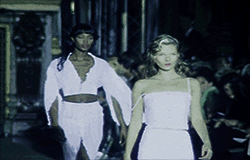

chart reading; four spots left!
intuitive readings still open
dm me for more info and follow for more content!

i've done research of all the big six supermodels and i'll list them down before i dissect which placements appeared the most!
in this post, i focus on signs, sign doms, planet doms, degrees and houses etc, i will not focus on asteroids.
now with the post ⬎
CHRISTY TURLINGTON ⬎



sagittarius ascendant 28°
capricorn sun 12° 1h
gemini moon 29° 7h
capricorn mercury 27° 1h
aquarius venus 27° 2h
scorpio mars 2° 10h
libra, capricorn and gemini dominant.
moon, jupiter and saturn dominant.
CINDY CRAWFORD ⬎

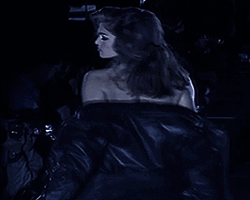

cancer ascendant 22°
pisces sun 1° 8h
pisces moon 8° 9h
pisces mercury 13° 9h
capricorn venus 28° 7h
pisces mars 16° 9h
pisces, cancer and capricorn dominant.
moon, mars and venus dominant.
CLAUDIA SCHIFFER ⬎



scorpio ascendant 10°
virgo sun 1° 10h
gemini moon 20° 8h
virgo mercury 26° 11h
libra venus 17° 11h
leo mars 24° 10h
virgo, scorpio and leo dominant.
mars, sun and pluto dominant.
KATE MOSS ⬎

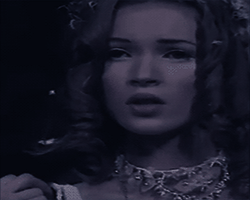

taurus ascendant 22°
capricorn sun 25° 9h
scorpio moon 10° 8h
aquarius mercury 0° 10h
aquarius venus 7° 10h
taurus mars 8° 12h
aquarius, capricorn and taurus dominant.
sun, venus and mercury dominant.
LINDA EVANGELISTA ⬎



taurus sun 19°
virgo moon 20°
aries mercury 23°
taurus venus 27°
virgo mars 11°
virgo, taurus and aries dominant.
venus, saturn and moon dominant.
NOAMI CAMPBELL ⬎


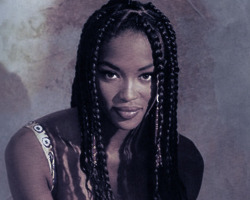
capricorn ascendant 22°
gemini sun 1° 4h
sagittarius moon 8° 10h
taurus mercury 13° 3h
gemini venus 28° 5h
gemini mars 16° 5h
gemini, sagittarius and taurus dominant.
neptune, sun and saturn dominant.
NOW ONTO THE DEEPER RESEARCH ⬎
♇ the ascendant that occurred the most was capricorn. however the element of the ascendant that appeared the most was earth and water. the modality of the ascendant that appeared the most was fixed and cardinal.
♇ the sun sign that occurred the most was virgo. but the element of the sun sign that appeared the most was earth and the modality that came up the most was mutable.
though the type of houses they appeared in the most was in cardinal/axis houses.
♇ the moon sign that appeared the most was gemini. the element of the moon sign that appeared the most were air and water. the modality of the moon sign that occurred the most was mutable.
and the type of houses they appeared the most in were mutable houses. specifically 6h and 9h.
♇ the mercury sign that appeared the most were all even, they were virgo, pisces, taurus, aries, capricorn and aquarius. the element that appeared the most was earth and the modality were all even as well. cardinal, fixed and mutable.
though, the type of houses they appeared in the most was the 10h; tied with mutable houses, but leaning onto 10h.
♇ the venus sign that occurred mostly was aquarius, the element that came the most in the research was air, the modality was fixed.
though the houses the venus planet appeared in the most was the 10h but also fixed houses.
♇ lastly, the mars sign that appeared the most was scattered, leo, pisces, scorpio, gemini, virgo and taurus. though the element that appeared the most was water and earth mars. and the modality that occurred the most was fixed.
and the houses the mars planet appeared the most was both the 10h and 12h, but with the other houses it seemed like mutable houses.
♇ the signs in the big six's natal charts that appeared the most was gemini, virgo, and capricorn, [taurus can be included], this is all in order.
♇ the degrees that appeared the most was the 27°, 29° and 0° [1 can be included], but aside from that, when i researched i noticed that all leo degrees appeared, especially in the venus planets.
♇ from the research i've done, i noticed that most of these big six models had 10h, 9h and 1h placements, all in order.
♇ the sign dominants that appeared the most is taurus, aries and gemini, in order.
♇ and the planetary dominants that occurred the most was sun, moon, venus and saturn, all in order.
♇ lastly the sign degrees that appeared the most was aries degrees, leo degrees, capricorn degrees and gemini degrees, all in order.

chart reading; four spots left!
intuitive readings still open
dm me for more info
masterlist
pluto
#christy turlington#sagittarius#capricorn#gemini#aquarius#scorpio#libra#moon#jupiter#saturn#cindy crawford#cancer#pisces#mars#venus#virgo#leo#sun#pluto#claudia schiffer#taurus#mercury#kate moss#aries#linda evangelista#neptune#naomi campbell#noami campbell
395 notes
·
View notes
Text
How do you do, fellow simps?
We are Nosferatu (also known as Mary, Elizabeth or Rat; they/she/he/it/ze/xey/fae/per/chaos/ghoul/blood/doll; main @nosferatu-inside-of-me), Nyx (she/her; main: @christie-r0ad), Zenith/Jasper (he/him; main @z-xmyers) and Death (she/they; main: @deaths-reign02) and we have decided to do write horny shit here. This sideblog will mostly include anything Ghost and Repugnant related, with some occasional Gorillaz. You can learn more about us here.
We also have a discord server for the Ghesties and Repugnant fans to chill and vibe together! You can join the server here.
We provide content fot the entire Emeritus bloodline and some personal favorites, which means we write for:
Papa Emeritus Zero/Papa Nihil (both young and old because we're filthy simps)
Papa Emeritus I/Primo
Papa Emeritus II/Secondo (biblically accurate because y'all forget he's a party animal)
Papa Emeritus III/Terzo (he/they)
Papa Emeritus IV/Cardinal Copia
Sister Imperator (both young and old because, as written above, we're filthy simps)
Mister Saltarian
The Director
Father Jim Defroque (because y'all are sleeping on daddy Jimmy fr)
Here you can find out more about our headcanons about their identities!
Multicharacter human masterlist (more than 3 characters) can be found here.
As well as all the Ghouls:
Fire Ghouls
Alpha (he/him)
Ifrit (he/him)
Sodo (NOT Dewdrop; he/him)
Blaze (Papa Nihil's Ghoul; he/him)
Water Ghouls
Chain (it/ghoul)
Lake (he/him)
River (they/them)
Cowbell (headcannoned by us as a water ghoul; they/it)
Mist (he/she)
Rain (he/she/ve)
Storm (Papa Nihil's Ghoul; they/he)
Earth Ghouls
Cliff/Big Earth (first Earth Ghoul; they/he)
Pebble (he/him)
Ivy (he/xe)
Mountain (he/him)
Quake (Papa Nihil's Ghoul, they/them)
Air Ghouls
Eurus (first Air Ghoul, they/she)
Zephyr/ChAir (they/he)
Cirrus (she/ze)
Cumulus (she/her)
Tornado (Papa Nihil's Ghoul, ze/zir)
Quintessence Ghouls
Omega (he/him)
Delta (transelemental Water-Quintessence; they/it)
Aether (he/him)
Phantom (he/they/xey/it)
Chaos (Papa Nihil's Ghoul; he/she/they/it)
Multi Ghouls
Swiss (he/it/xey)
Phil (he/him)
Sunshine (she/her)
Aurora (she/they/fae)
Here you can find out more about our headcanons about their identities! (Ghoulettes/Ghouls/Papa Nihil's Ghouls)
Ghouls masterlist can be found here.
Other Ghost headcanons (mostly world-building) can be found here.
We also make content for the following members of Repugnant:
Mary Goore (they/them. i will not answer anything where mary goore is regrded as a he/him.)
DD Sars (he/him)
G. Grotesque (he/him)
E. Forcas (he/him)
Tom Bones (he/him)
Here you can find out more about our headcanons about their identities!
Repugnant masterlist can be found here.
You can also find works for the Gorillaz characters:
2-D (he/him)
Murdoc Niccals (he/him)
Noodle (she/her)
Russel Hobbs (he/him)
Ace D. Copular (he/him)
We provide both SFW and NSFW content in forms of headcanons and fics, big and small. We won't write anything that makes us uncomfortable, might post some small graphic edits, too. We're absolutely cool with LGBTQ+ stuff. This blog is a safe space for you, no matter your size, race, sexuality or identity and we promise to do our best to make you feel included, respected and comfortable. If anything we wrote or published makes you feel wrong, please do not hesitate to say so in the comments or to message Nosferatu about it.
If you do not specify that you want a oneshot/fic, we will most likely write your requests as headcanons since it's easier to read and write.
Our wonderful profile picture has been provided by the incredible @tasty-ribz. The beatiful Pride background was made by the amazing @mustluvecho.
CURRENT EVENTS:
Kinktober 2023 (it will be finished one day you just gotta believe.)
DNI AND GET TF OUT IF YOU ARE:
homophobic
transphobic
fatphobic
racist
a TERF
a pedophile
a zoophile
one of those disgusting anons who sent death threats to tasty-ribz
one of the anons bullying copias-girl
one of the assholes who spam Chris
one of the idiots invading Jutty and Liv's privacy
a Phantom/Aurora hater
As for minors: we are NOT your parents. It's your call if you read our content. We take no responsibility for it.
Our taglist can be found here.
Send an ask if you'd like to be added. Mention if for all or only specific characters. (these asks will not be published)
#ghost band#papa emeritus i#papa emeritus ii#papa emeritus iii#papa emeritus iv#primo#secondo#terzo#cardinal copia#sister imperator#father jim defroque#papa nihil#papa emeritus zero#x reader
167 notes
·
View notes
Photo
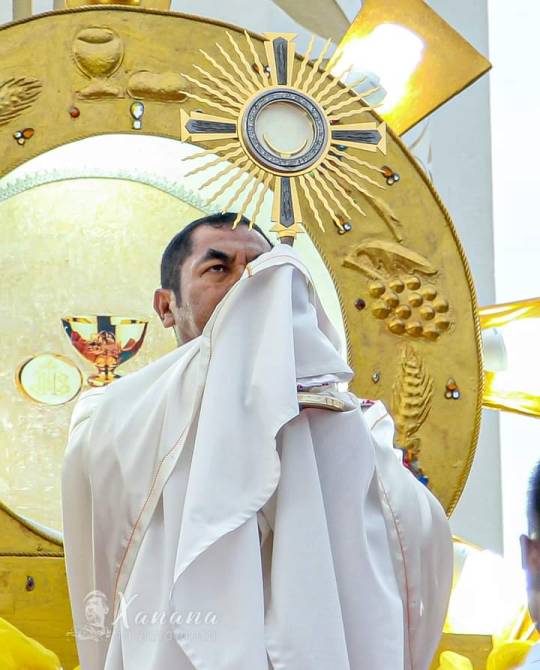
Corpus Christi in Timor-Leste
Last Thursday a huge crowd gathered for the annual Corpus Christi procession through the streets of Dili, led by the Archbishop, Cardinal Virgilio do Carmo da Silva. The Feast of the Body and Blood of Christ is a public holiday in Timor-Leste enabling many people to take part in the procession. These photos are from the Facebook page of Xanana Gusmau. Among those in the photos are Carmelite friars and Lay Carmelites.
#jesus #christ #eucharist #blessedsacrament #corpuschristi #timorleste #monstrance #solemnity #feast #kingdomofgod #lightofchrist #carmelite #carmelites #laycarmelites #vocation #priesthood #brotherhood #prayer #faith #spirituality #realpresence #peace #hope #love #courage #religiouslife #lectiodivina #scripture #gospel #celebratingathome
23 notes
·
View notes
Photo
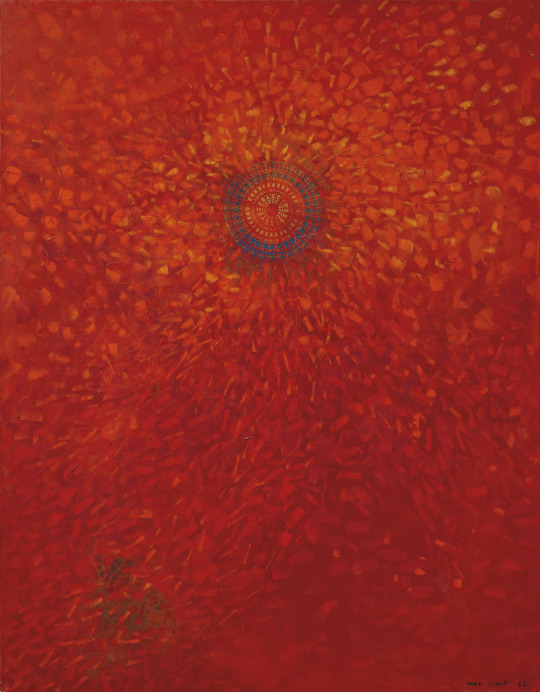
Max Ernst (1891-1976, German) ~ Où naissent les cardinaux / Where the Cardinals are Born, 1962
[Source: Christie’s]
154 notes
·
View notes
Note
ask game: 18, 29, 32 (and I shall stop myself there...😂)
Keep sending more!! I love these asks :)))
18. Your least favorite book ever
The Maidens by John Michaelides. I'm probably misspelling his name but I don't fucking care. This entire book was a cardinal offense against literature. There are better reviews than I can get into on GR about how this book is shit, but it has also received a lot of 5-star reviews, which makes me fear for reading comprehension because I'm not sure what's redeeming about this (maybe its pacing. At least that meant I spent less time on this piece of trash).
Basically, it's a "thriller" masquerading as a "portrait of women's psychology" masquerading as dark academia. In short, our MC is a group psychologist but in the way that the main character of a poorly written movie trying to create a "smart" female character. She's supposedly good at human nature, yet chronically fails at creating boundaries for her job and for coping with her own mental health following the death of her husband. Suddenly, she hears from a young relative of hers (i've forgotten the connection) that this relative's friend was murdered at her college. The main suspect is a Julian Morrow from Secret History type figure that *all* the girls in the department have formed a cult around, thus earning the name "the maidens." He's also a main suspect in the sense that a movie villain is: he's so "obviously" a villain that you immediately know he's not the killer. MC does some bad sleuthing, which includes somehow becoming the love interest to both the fake villain and a nice anemic grad student whose purpose I don't recall, and the twist ending comes after like 200 pages of red herrings.
If this book had been written well, I would have loved it. The reason I wanted to read it was from a hope that it might explore the group mentality in a school setting, how female students navigate gender and power in academia, whose lives are deemed less valuable. None of these things were actually dealt with in any depth, sincerity, or understanding of female psychology. All the "maidens" characters were depicted as kind of guy-crazy or snooty. The murderer falls into the crazy woman killer stereotype (again motivated by a man). The MC becomes an amateur detective because she's a psychologist, but since there was so little psychology in the actual murder, she doesn't uncover anything really vital? She watches two students have sex in the woods, which was described so horribly that I've been left scarred for life. She becomes the love object of two men in a way that shouldn't have even been connected to the plot. There was such a male gaze through the whole book, and what felt even more insulting was the author's attempt to be "feminist" and emulate female writers like Dorothy L Sayers and Agatha Christie. A book with not a single female character could be more progressive than this.
Yeah if you can't tell I still get in rages about this.
29. Your favourite YA novel
Very good question since I hardly read what people consider YA lol (ignoring a lot of the books from the 80s and 90s that have just been shelved in YA because there's nowhere else to put it, like DWJ novels).
I guess I'd say in terms of what has been published recently, VE Schwab's Monsters of Verity duology! I prefer her urban fantasy generally to her high fantasy, and this world felt like a really well-made Netflix drama. I really want to reread those books soon.
32. Your favourite nonfiction novel
Ignoring the semantic inaccuracy of "nonfiction novel," I'm going to interpret this as CNF/memoir. Which I actually don't read a lot of, either! But I'm currently in the middle of Crying in H Mart by Michelle Zaumer and really enjoying it. It's kind of rare to know I'm the direct target audience of a book (biracial Korean-American 20-something), and I'm really curious to read reviews of it later.
5 notes
·
View notes
Text
Thought for the Day – 20 June – The Eucharistic Life
Thought for the Day – 20 June – Meditations with Antonio Cardinal Bacci (1881-1971)
The Eucharistic Life
“May the Most Blessed Sacrament, be forever praised and adored!”
Anima Christi
Soul of Christ, sanctify meBody of Christ, save meBlood of Christ, inebriate meWater from the side of Christ, wash mePassion of Christ, strengthen meGood Jesus, hear meWithin Your wounds, shelter mefrom turning…

View On WordPress
8 notes
·
View notes
Photo

Peril At End House by Agatha Christie (Cardinal, 1959)
31 notes
·
View notes
Text
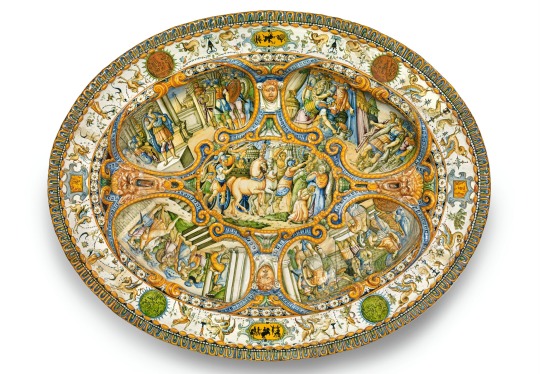
A MONUMENTAL ITALIAN MAIOLICA ARMORIAL ISTORIATO OVAL DISH
CIRCA 1563-1565, GUIDO AND ORAZIO FONTANA WORKSHOP, URBINO, OR ORAZIO FONTANA WORKSHOP, URBINO (OR POSSIBLY TURIN)
The interior painted with five scenes depicting episodes from the campaigns of Julius Caesar divided by molded strapwork with female masks and screaming satyr masks, the white-ground border painted with grotesques spaced by four circular medallions and four panels within strapwork escutcheons, enclosed by a band of molded ochre beads and an egg and dart ornament rim, the reverse with the arms of Cardinal Iñigo d’Avalos surmounted by his red galero and flanked by twelve pendant tassels, within an ochre footrim and molded strapwork cartouche with fleur-de-lys against a ground painted to simulate a wavy sea with swimming dolphins and sea-monsters, enclosed by a molded strapwork border punctuated by four fleur-de-lys.
Christie’s
4 notes
·
View notes
Text
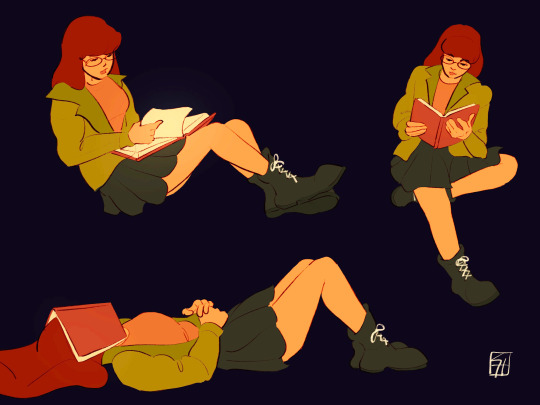
daria
#daria fandom#daria#daria fanart#daria morgendorffer#character art#cardinal christy#artblr#digital art
989 notes
·
View notes
Text

Today In 1901: New York Giants rookie pitcher Christy Mathewson hurls a no-hitter vs. the St. Louis Cardinals!
3 notes
·
View notes
Text
⬇️ Tag drop ⬇️
Actors & Actresses
al st john
alan tudyk
aleksandr demyanenko
aleksandr trofimov
aleksei kuznetsov
alexandra yakovleva
alice lake
alice mann
alisa freindlich
alla demidova
anastasiya vertinskaya
anita page
andy whitfield
anne cornwall
barbara brylska
bartine burkett
ben barns
beulah booker
brown eyes
bruno ganz
buster keaton
conrad veidt
dmitri zolotukhin
dorothy christy
dorothy sebastian
edward norton
ekaterina savinova
eleanor keaton
evgeniy leonov
heath ledger
igor starygin
inna churikova
innokenty smoktunovsky
irene purcell
irina alfyorova
ivan pyryev
jack black
jason isaacs
joe keaton
joe roberts
karin boyd
kate beckinsale
kate price
kathleen myers
kathryn mcguire
klara luchko
klaus maria brandauer
larisa guzeeva
linda hamilton
liv tyler
luciena ovchinnikova
luke the dog
lyudmila gurchenko
marceline day
margaret leahy
margarita terekhova
marina dyuzheva
marion byron
marion mack
mikhail boyarsky
mikhail kozakov
mona maris
nadezhda rumyantseva
naomi watts
natalie talmadge
natalya krachkovskaya
natalya seleznyova
natalya varley
nora arnezeder
norman reedus
oleg menshikov
oleg tabakov
orson welles
paul bettany
paulette dubost
peter falk
phyllis barry
phyllis haver
renee adoree
rosalind byrne
roscoe arbuckle
ruth dwyer
ruth selwyn
sally eilers
sally o'neil
snitz edwards
sofiko chiaureli
sofiya pilyavskaya
sybil seely
tatyana lyutaeva
thelma todd
tilda swinton
tom hiddleston
valentin smirnitsky
veniamin smekhov
virginia fox
whitney houston
yanina zheymo
yelena ukrashchyonok
yuriy yakovlev
Characters
anne of austria
aramis
assol
athos
bagheera
baloo
buckingham
cardinal richelieu
constance bonacieux
d'artagnan
daryl dixon
edward rochester
geoffrey chaucer
grigori rasputin
king louis xiii
laura lyons
milady de winter
mowgli
peter the great
porthos
raksha
sarah connor
shere khan
van helsing
Origin
american cinema
american tv show
austrian cinema
barbie movies
behind the scenes
czech cinema
french cinema
german cinema
hungarian cinema
other peoplez edits
russian animation
russian cinema
silent cinema
soviet animation
soviet cinema
soyuzmultfilm
Directors
adolf trotz
aleksandr ptushko
aleksandr sery
alexander rowe
aleksey korenev
alla surikova
andrei tarkovsky
brian helgeland
don bluth
edward sedgwick
eldar ryazanov
gary goldman
georgi yungvald-khilkevich
gleb panfilov
igor maslennikov
istván szabó
james cameron
jim jarmusch
kirill mikhanovsky
leonid gaidai
mikhail shapiro
mikhail tsekhanovsky
nadezhda kosheverova
owen hurley
peter jackson
robert stevenson
sergey gerasimov
stephen sommers
svetlana druzhinina
vadim medzhibovskiy
vera tsekhanovskaya
vladimir menshov
wim wenders
Time Periods
1910s
1920s
1930s
1940s
1950s
1960s
1970s
1980s
1990s
2000s
2010s
Films & Shows
a cruel romance
a knight's tale
a man from boulevard des capucines
adventures of mowgli
anastasia
at the beginning of glorious days
back stage
barbie as rapunzel
barbie as the princess & the pauper
barbie in the 12 dancing princesses
barbie in the nutcracker
barbie of swan lake
battling butler
carnival night
cinderella 1947
clever dog sonya
college
coney island
convict 13
cops
d'artagnan and the three musketeers
dämen der frauen
daydreams
der himmel über berlin
doughboys
for family reasons
free and easy
gentlemen of fortune
give me liberty
go west
good night nurse!
hard luck
high sign
his wedding night
ivan vasilievich changes occupation
jane eyre 1943
le roi des champs-élysées
look for a woman
love and doves
maugli
midshipmen onwards!
mirror
moonshine
morozko
my wife's relations
musketeers twenty years after
neigbors
oh doctor!
one week
only lovers left alive
operation y and shurik's other adventures
our hospitality
out west
parlor bedroom and bath
pokrov gates
prince of foxes
prisoner of the caucasus or shurik's new adventures
scarlet sails
seven chances
sherlock jr
sidewalks of new york
spartacus: blood and sand
spartacus: gods of the arena
speak easily
spite marriage
steamboat bill jr
sweet november
terminator 2: judgement day
the adventures of sherlock holmes and doctor watson
the balloonatic
the beginning
the bell boy
the blacksmith
the boat
the bodyguard
the butcher boy
the cameraman
the cook
the electric house
the fellowhip of the ring
the frozen north
the garage
the general
the girls
the goat
the haunted house
the hayseed
the holiday
the hound of the baskervilles
the incredible hulk
the irony of fate or enjoy your bath!
the kuban cossacks
the lord of the rings
the love nest
the navigator
the painted veil
the paleface
the passionate plumber
the rough house
the saphead
the scarecrow
the walking dead
the wild swans
the words
this is your life
three ages
van helsing
watch out for the automobile
what - no beer?
wings of desire
young russia
5 notes
·
View notes
Photo

THE DESCRIPTION OF SAINT ALOYSIUS GONZAGA
The Patron of Youth, Jesuit Scholastics, AIDS Patients and AIDS Caregivers
Feast Day: June 21
"There is no surer sign that one is of the number of the chosen than to see that he fears God, while at the same time being tried with tribulation and desolation in this world."
The patron of the youth and those who suffered from AIDS, was born near Castiglione delle Stiviere, Duchy of Mantua, Holy Roman Empire (in Lombardy, Italy), into the noble Gonzaga family on March 9, 1568.
In order to satisfy the ambitions of his father, Ferrante de Gonzaga, the Marquis of Castiglione, the first-born Aloysius was trained in the art of war, and was obliged to attend military parades and royal banquets. He was so disappointed by the vices of the nobility that he developed an intense desire for religious life. He fasted three times a week on bread and water, scourged himself with a stick, and rose at midnight to pray on the stone floor of his room. In order to safeguard his chastity, he would keep his eyes persistently downcast in the presence of women.
After reading a book describing the experiences of the Jesuit missionaries in India, he determined to become one of them. In November of 1585, not withstanding the furious opposition of his father, Aloysius renounced his inheritance, which was confirmed by the Holy Roman Emperor. He went to Rome and because of his noble birth, he gained an audience with Pope Sixtus V. Following a brief stay at the Palazzo Aragona Gonzaga, the Roman home of his cousin, Cardinal Scipione Gonzaga, he entered the Society of Jesus on November 25, 1585.
Six weeks later, Ferrante died in peace with the Lord. From the moment his son had left him, he had completely reformed his life. Aloysius was a model of perfection. Aware of the dangers of pride, he requested to serve in the kitchen and to perform the most humble duties.
In 1591, while serving the sick during the plague, Aloysius contracted the disease, grew ill and was bedridden by March 3, 1591, a few days before his 23rd birthday. And after three months of suffering, Aloysius died at the age of 23, on June 21, 1591 - the Octave of Corpus Christi.
In the last letter to his mother, Donna Marta Tana di Santena, he wrote:
'Take care not to insult God's loving kindness, by mourning for a dead one who is living face to face with God. Our parting will not be for long; we shall see each other in heaven.'
Aloysius was beatified by Pope Paul V on October 19, 1605 and is canonized a saint on New Year's Eve 1726 by Pope Benedict XIII. His major shrine can be found in Rome. In 1729, Pope Benedict XIII declared Aloysius Gonzaga to be the patron saint of young students, and in 1926, he was named patron of all Christian youth by Pope Pius XI.
#random stuff#catholic#catholic saints#aloysius gonzaga#san luis gonzaga#society of jesus#jesuits#AIDS#gonzaga university
4 notes
·
View notes
Photo

Happy Easter everyone! Hope everyone is having a relaxing holiday with their friends, families , or loved ones. Or that you are doing well nonetheless and have peace and rest 🕊️ Went for a broken pinstripe look, again, love breaking those rules. 🎩 Never let them know your next move 💪 🌿 What I'm Wearing 🌿 • Hat - @cthericson • Shirt - Henry Hudson • Tie - Jack London • Vest - None • Suit/Coat - @bdtailormade • Trousers - Pierre Cardin • Socks - @poloralphlauren • Shoes - @colehaan Please like and comment below to let me know what you think! 👇 #1920s #1930s #yourvintagesoul #vintagestylenotvintagevalues #darkacademia #vintage #vintagestyle #ootd #fashion #vintagefashion #flatcap #suit (at Corpus Christi, Texas) https://www.instagram.com/p/Cq1HGK8Ayvn/?igshid=NGJjMDIxMWI=
#1920s#1930s#yourvintagesoul#vintagestylenotvintagevalues#darkacademia#vintage#vintagestyle#ootd#fashion#vintagefashion#flatcap#suit
5 notes
·
View notes
Text
An Early History of Detective Fiction (Part 3)

Agatha Christie ‘The Murder of Roger Ackroyd’
While it is true to say that Agatha Christie never approached her work from a feminist viewpoint, or indeed never seemed to ‘buy in’ to the feminist doctrine, her mark on the canon of detective fiction cannot be understated.
Again, the historical context of the release of The Murder of Roger Ackroyd, and its subsequent reception can be considered as important to an understanding of the text, and the conventions of detective fiction in this era. The novel also constituted a remarkable break in form and convention, which I’ll look at in due course.
Between Collins and Christie, there is a tremendous leap forward both in time and the conventions of the genre. This was what Julian Symons calls ‘The First Golden Age[i]’, which was dominated, as in the late Victorian era, by the short story, and by male authors such as GK Chesterton and R Austin Freeman.
From this point we can chart the rise of the novel as opposed to dependence on the short story, which can be attributed, as with the Victorian sensation novels, with a rise in availability of literary works to the masses, and with the time available to read them. Says Symons
‘The emancipation of women, which took place during the [First World] War played a large part in the creation of a new structure in domestic life, particularly in Europe, through which women had more leisure, and many of them used it to read books’.[ii]
Christie’s first novel The Mysterious Affair at Styles (1920) was published at just the right time to capitalise on the availability of this demographic. It was also the first novel to feature her Belgian detective Hercule Poirot. In his fastidiousness, he was neither a Dupin nor a Cuff. But Martin Priestman, in Crime Fiction: From Poe to the Present (2013), notes that ‘while traditional British attitudes could be relied on to regard a French accent as inherently absurd, the role of the gallant little Belgium in the recent Great War added a more positive element.’ [iii]
It can be considered that Christie’s career continued without much distinction until the appearance of The Murder of Roger Ackroyd in 1926. She was one of a group of detective story writers publishing books at this time, all based around the same conventions, notably Dorothy L Sayers with her Lord Peter Wimsey stories, and Anthony Berkeley with his Roger Sheringham tales.
The mystery writer and Catholic priest Ronald Knox even went so far as to devise a list of ‘ten detective story’ commandments in the early part of the twentieth century, which writers of detective fiction should follow as an informal framework to protect the ‘purity’ of the genre. Among these were the commands ‘no accident should ever help the detective’ and ‘The stupid friend of the detective, the Watson, must not conceal any thoughts which pass through his mind.’ With The Murder of Roger Ackroyd, Agatha Christie tore straight through the fabric of this convention, and set a new standard for innovation in the genre.
The beauty of the moment of revelation in The Murder of Roger Ackroyd is that it is entirely unexpected and really set a template for writers to be unconstrained in terms of structure, and of form. Readers up to this point felt familiar with the detective novel format – the country setting, the consulting detective, the locked room mystery, the conservativeness of the characters. The reader above all trusts the man of position, the doctor who is narrating our tale, and has earned his position of trust via his positioning as an agent of good in his profession. As Martin Priestman says
‘The ‘least-likely’ game took a step forward which, for some critics, threatened the whole basis of the genre by breaking one of its cardinal rules: that the narration itself should be free of suspicion.’[iv]
Christie is very careful – at no point does Dr Sheppard lie to the reader. The reader, with perhaps an overfamiliarity with detective story conventions, such as those laid out by Knox, are taken in completely.
In her introduction to the set text edition of The Murder of Roger Ackroyd, the writer Laura Thompson states that Christie detractors, those seeking to diminish the powers of her innovation are missing the point entirely. It is her very simplicity that makes these moments so devastatingly impactful.
‘For they fail to grasp the essential point about Christie’s simplicity, which is that it is entirely intentional, and indeed as deceptive as the narrator of The Murder of Roger Ackroyd.
Dr Sheppard never outrightly lies in his narrative, but he leaves us certain trails of breadcrumbs as clues, which are the parts we instantly reread once we’ve learned the secret to see how the facts of the case passed us by completely, particularly this passage
‘The letter had been brought in at twenty minutes to nine when I left him [Ackroyd], the letter still unread.’[v]
The evidence is in plain sight, now we know the secret, but this was a work of such originality at the time that it would never have occurred to us to pursue the thread.
Conclusion
Although I stated at the beginning of this essay that I was going to have to be careful not to recite a full history of the development of the detective novel in the English language, it has been necessary to provide a decent amount of historical context to highlight the achievements of each writer I have explored. With Edgar Allen Poe, I had to look at the ways he had innovated, by comparing his achievements with what had gone before – including the examples of Oedipus the King and John Godwin’s Caleb Williams. The detective force was in its infancy when Poe was writing, and he deserves credit for working largely blind of what the force would be capable of and what the police would bring to the table in terms of skills and direction, which seemingly wasn’t much, judging by the way police investigation in The Murders in the Rue Morgue is floundering until Dupin involves himself in it
The bumbling official force is something that was a common thread from Poe, through the local inspector in The Moonstone, and the local police in The Murder of Roger Ackroyd.
An area where the texts differ is in their engagement with social issues of the day. Collins is by far the most socially engaged of the three writers I’ve explored. At least directly. He infuses The Moonstone with issues of Empire (represented by the three Brahmin), with an exploration of class difference (the storyline between Franklin Blake and the unrequited Rosanna Spearman) and even feminism in the strong-willed Rachel Verinder.
Indirectly though, it’s possible to read The Murder of Roger Ackroyd as a commentary of a ‘lost generation’ as a legacy of the First World War, as some critics have discussed. Though we can’t read Christie as a feminist, it doesn’t mean that she wasn’t conscious of issues of equality in the wider world.
It has been interesting to see how historical context has shaped three very different authors, and my exploring the texts in date order has allowed me to engage my reader in the narrative development of the genre, and how historical context has shaped and guided convention, form and structure, rather than being divorced from it as in the premise of the initial question. The narrative approach has been useful to me in presenting my ideas on how texts are conceived, and how they are brought to the market. All of the texts I have explored have benefitted from changes in society around the time of publishing – the expansion of lending libraries, and the socioeconomic factors that have enabled the dissemination of works of fiction on a mass scale to previously untapped markets – women readers and the working classes.
By engaging with the social issues and the historical context of each of the works – such as the Industrial Revolution and how that changed society and its reading habits - I’ve been able look in detail at how these details give extra life and meaning to the work, and how these changes feed into elements of form and context, and helped shaped the detective novel throughout history.
[i] Symons, p. 90
[ii] Symons, p. 116
[iii] Martin Priestman, Crime Fiction from Poe to the Present, Northcote House, 2013, p. 21
[iv] Priestman, p.21
[v] Agatha Christie, The Murder of Roger Ackroyd, Harper Collins, 2013, p.44
Bibliography
Ackroyd P, Poe: A Life Cut Short, Vintage, (2009)
Christie P, The Murder of Roger Ackroyd, Harper Collins, (2013)
Collins W, The Moonstone, ed. by Francis O'Gorman, Oxford World’s Classics (2019)
Knight Stephen, Crime Fiction 1800-2000: Detection, Death, Diversity, Palgrave Macmillan, (2004)
Poe E.A, The Selected Writings of Edgar Allan Poe, ed by G.R Thompson, Norton Critical Editions, (2004)
Priestman M, Crime Fiction: From Poe to the Present, Northcote House Publishers, (second edn 2013)
Pykett L, The Sensation Novel: From The Woman in White to the Moonstone, Northcote House Publishers, (1994)
Symons J, Bloody Murder, Pan Books Ltd, (1994)
Towheed S, Reading Wilkie Collins ‘The Moonstone: Readership, Form & Context, p. 11, (2022)
Whalen T, Average Racism: Poe, Slavery, and the Wages of Literary Nationalism, from The Selected Writings of Edgar Allan Poe, ed by G.R Thompson, Norton Critical Editions, (2004) pp. 921 - 941
6 notes
·
View notes